December 30, 2018
Martha O'Kennon
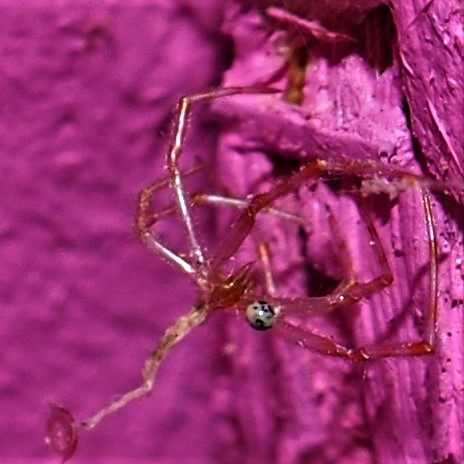
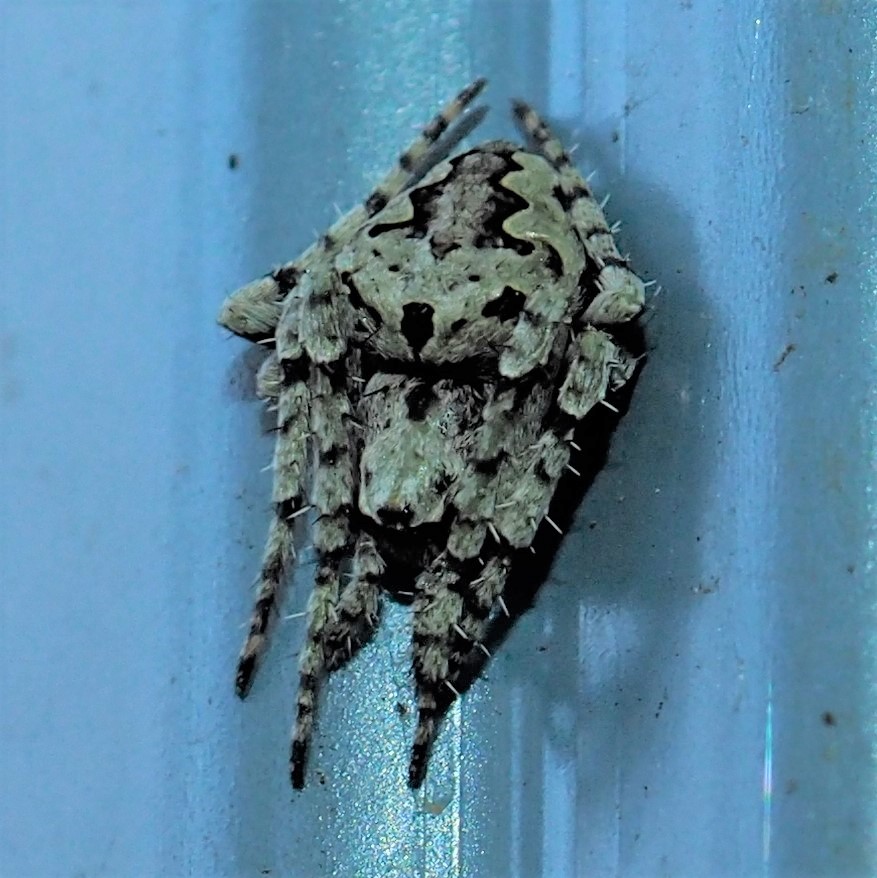
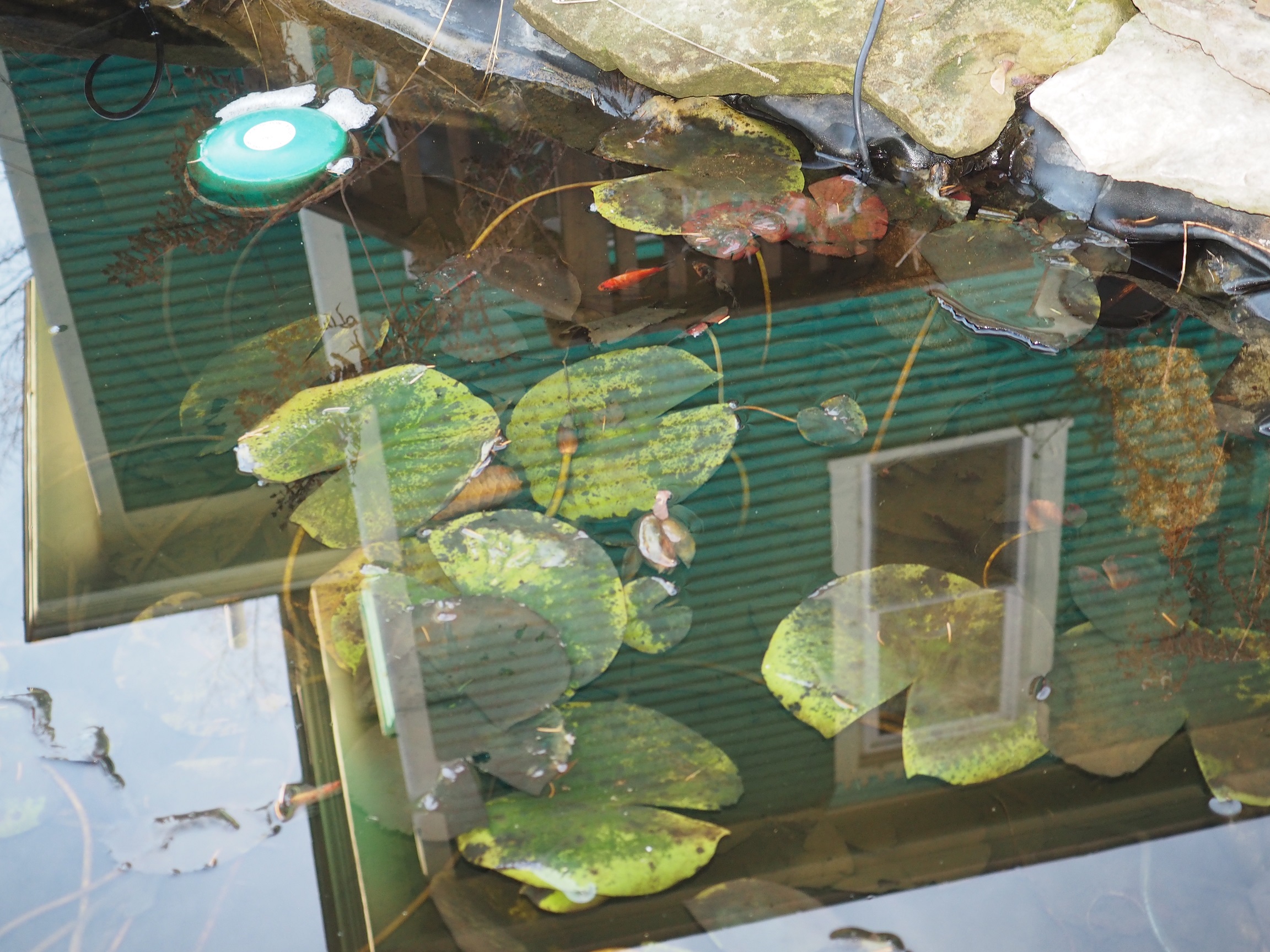
Did I describe the last blog's two weeks as dull, drab, mind-depressing? Well, that saves my having to consult my thesaurus for a description of the past two weeks. Not terribly cold, probably averaging a bit above 32 F (O C as I recall).. Just the kind of weather that you can envisage many many different kinds of critters coming out to test the waters or rather the stage called by me the workshop siding. Here you see a spider's pink moult (against the tasteful pink of the inside walls) with a tiny stone - a pet rock from somewhere; the green hump=backed spider, one of the two spiders that I never see except in winter; and a surprising photo of the pond as if it had been dug on the roof of the house.
Remember that there is information in the name of the file for each image. You can see it by mousing over the image - look at the lower left of the screen. Or you can click on the image to get to the (usually) larger image. Then the info is displayed in the address line above. Sometimes the second click will actually display a different view of the original image.
Now that we've determined who is and isn't a small honey ant, here are two Yes'es, and the third, an unwinged wasp that I promise I really tried to convince people was an ant, but there you have it and I'll talk a bit about this wasp at the end of the alphabetical presentation.
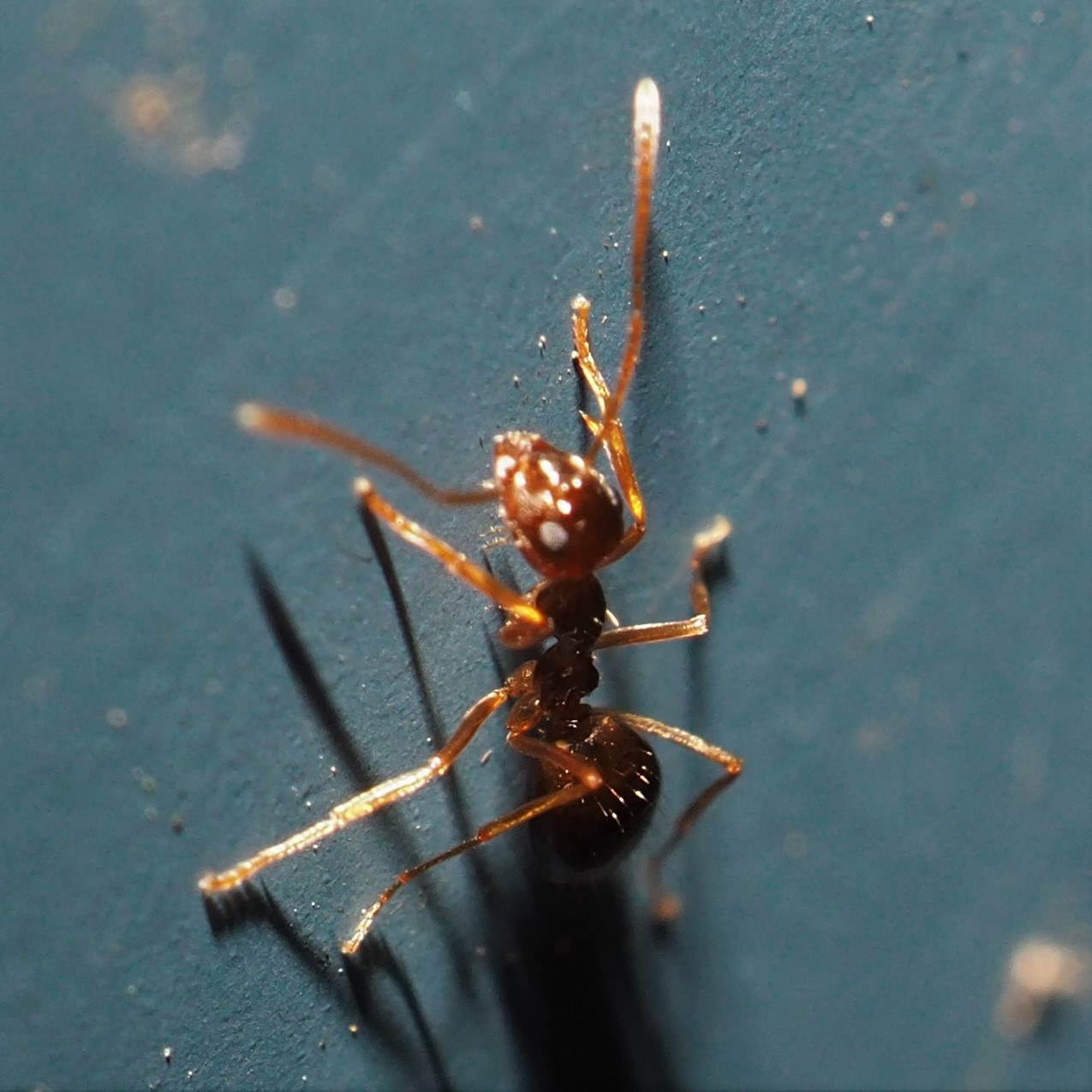
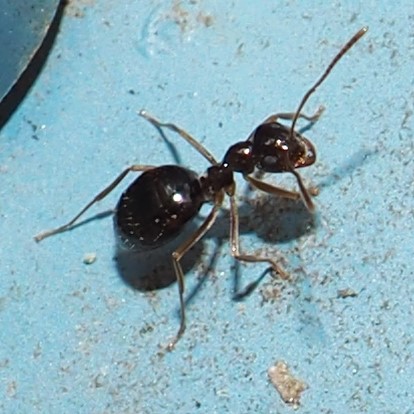
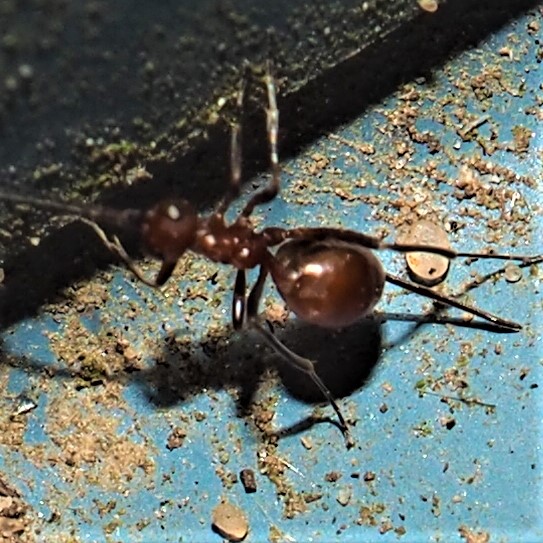
The lovely barklouse, Graphopsocus cruciatus, appeared every day that I went out hoping to see Something. It is still one of my favorite barklice. Toward the end of this period, this gorgeous
barklouse in rusty red (last two pictures) came back (or maybe it's another species. It's very hard to find someone who can identify these peripheral visitors).

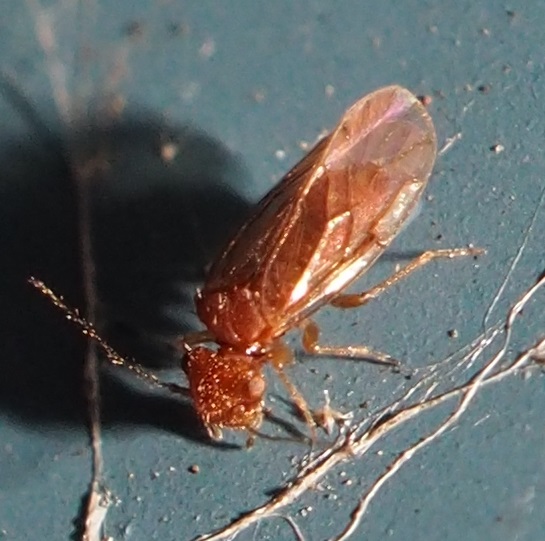

The small yellow nymph has returned, a bit better-developed, and I keep wishing we could do a little poll to see what it will turn out to be.

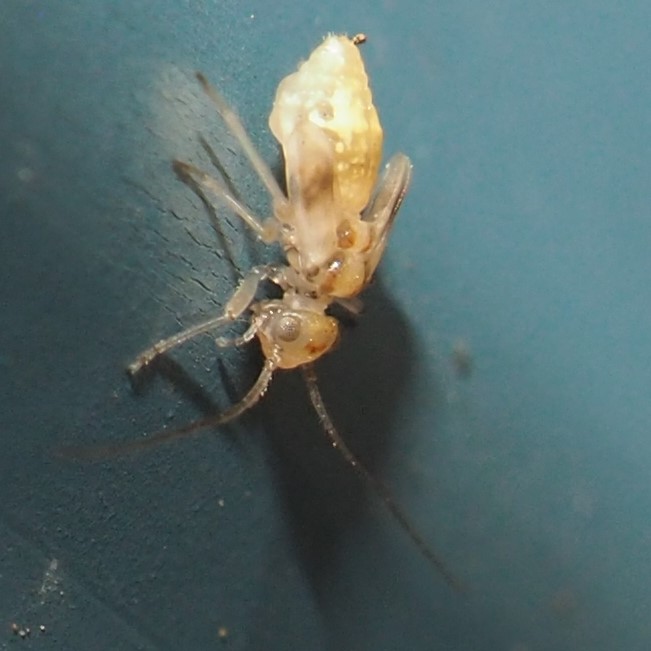

This beetle might or might not be a weevil - can't see its nose ornament too well at all. The second one may or may not be a flea beetle - it certainly has the metallic finish to it.
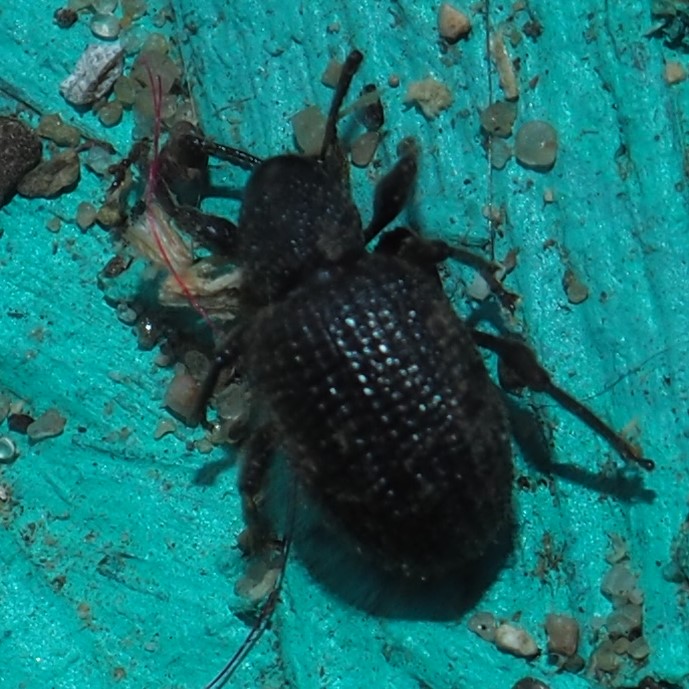
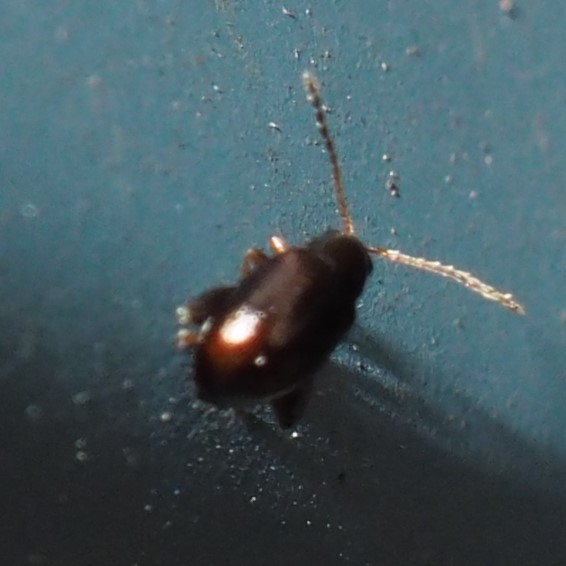
In May this year I found two beetles which were probably at least the same species and maybe the very same one, going by the time signature. They were promptly identified by @borisb as Genus Paratenetus. The third one here is one that I decided was also of genus Paratenetus, but borisb says really belongs with the Sap, Bark, Fungus and Lady Beetles (Superfamily Cucujoidea). Genus Paratenetus is a fairly rarely seen beetle.
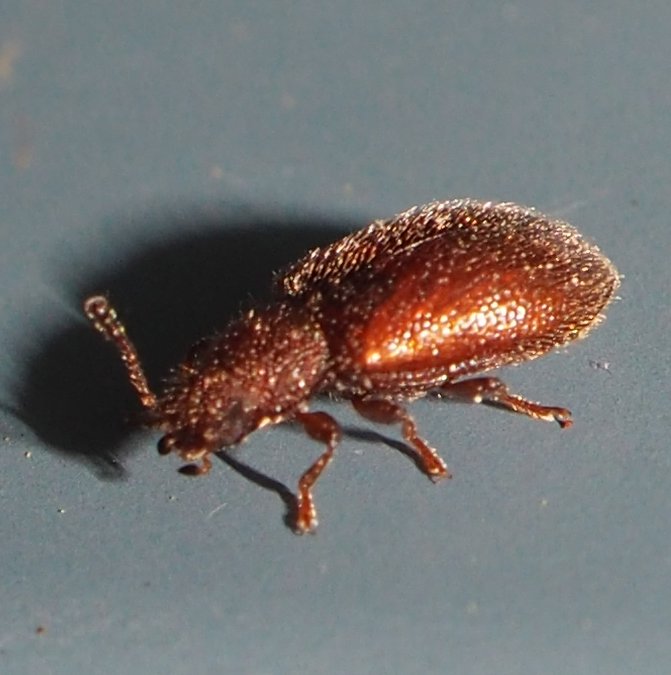


The famous Drymini brothers are still here. Here's the black one that we don't have a species name for yet. Second is its relative, Drymus unus. And third is another Lygus plant bug.
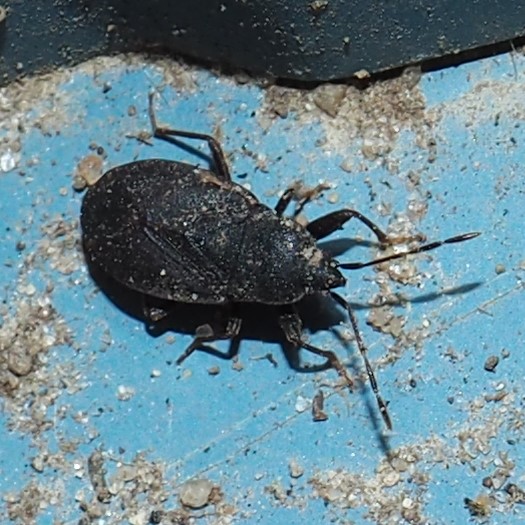
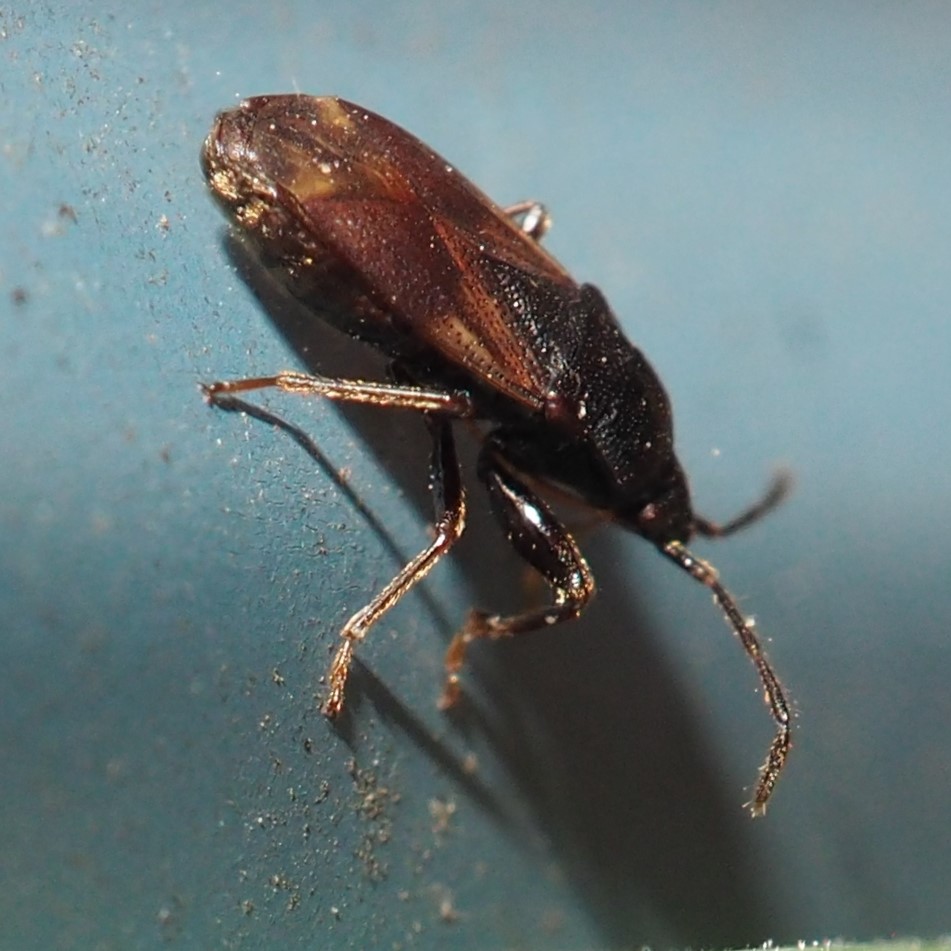

We had a number of surprises - mystery critters that I couldn't come close to identifying. This first one seems to be a kind of bug - very pretty, almost as if it's wearing a fur coat. Oh, it is. The second one seems to be a kind of fly, but wait! Count the wings. I now say it's a bug of some sort! Also quite pretty, but I don't have a clue what it is or what it eats...Anyway, I do have some nice flies so I will start a series with them.
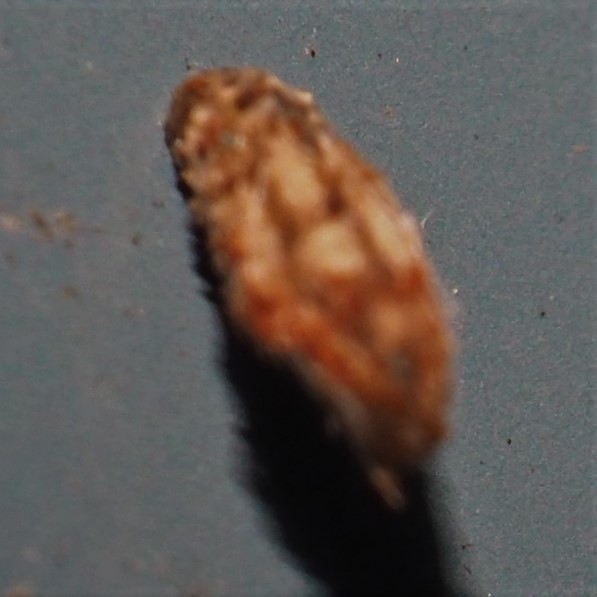
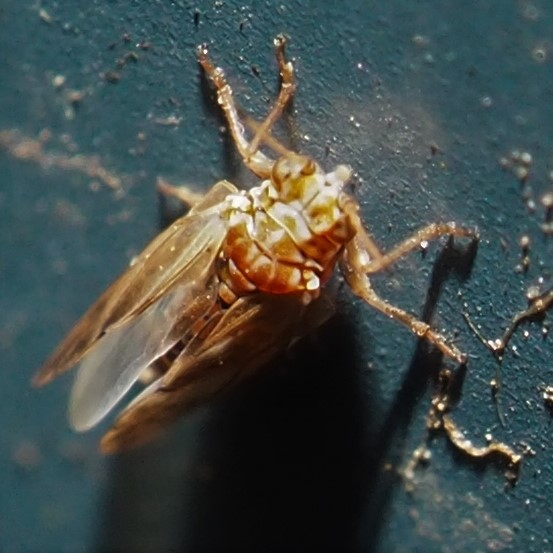
This first fly looks both a lot like the second and also a bit different from it, but it could be the lighting. The second and third are the same individual, and it is striking with striped eyes. What a surprise!
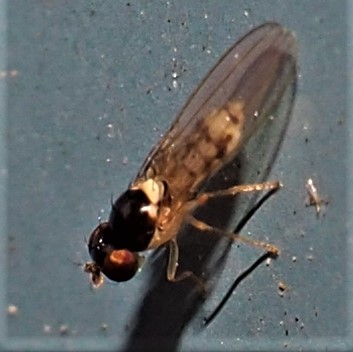

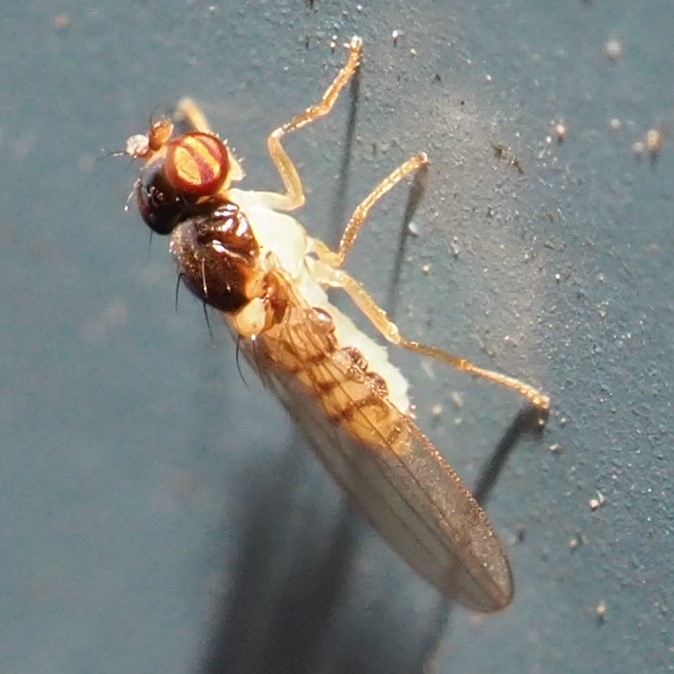
We're getting into the early season for gnats and midges so let's look at what is back already. This first one is a fungus gnat. The spiky leg joints are one help in identifying it. Second is a midge - a male because of its bushy antennae.
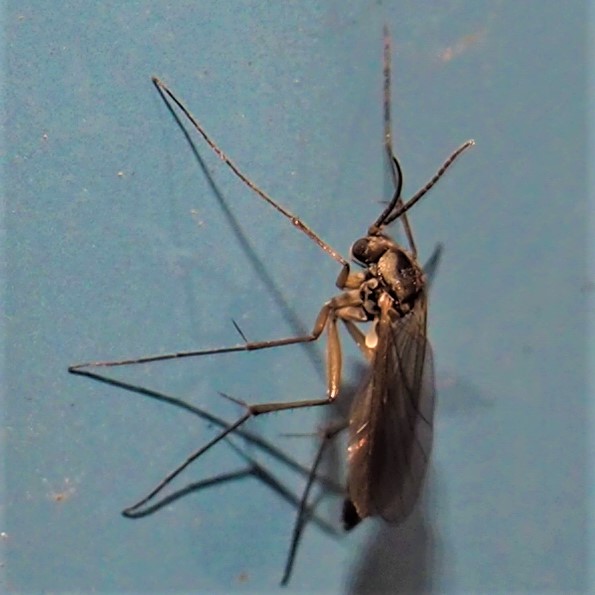
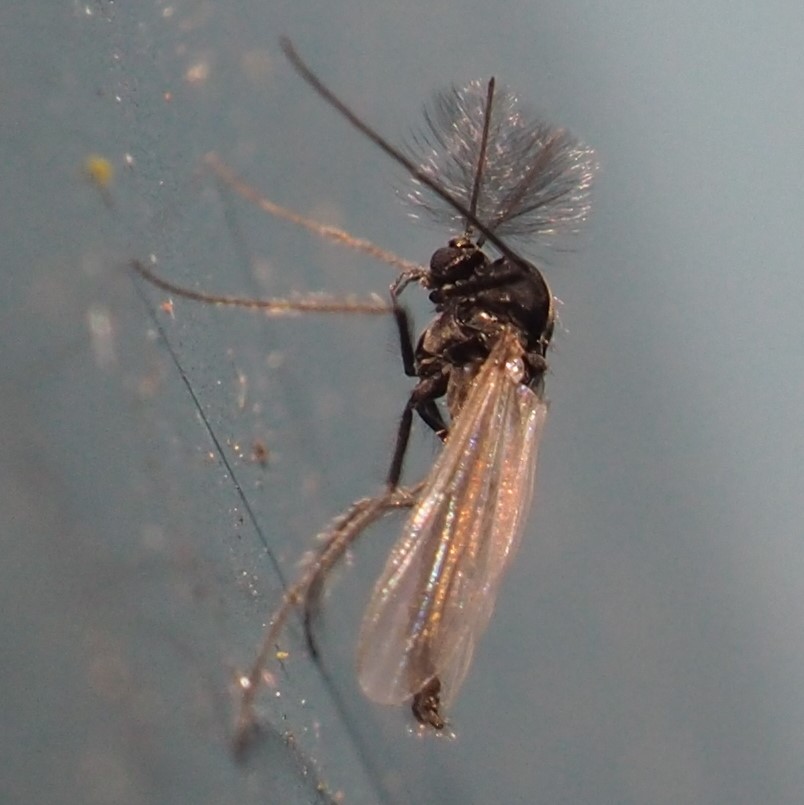
I only saw this one Harvestman in the past two weeks. It seems to be an adult. But we're still seeing these little moth larvae - the first (number 2) has itself rolled up into a kind of leaf skirt while number 3 is the more usual one wrapped more tightly in a leaf or leaves.
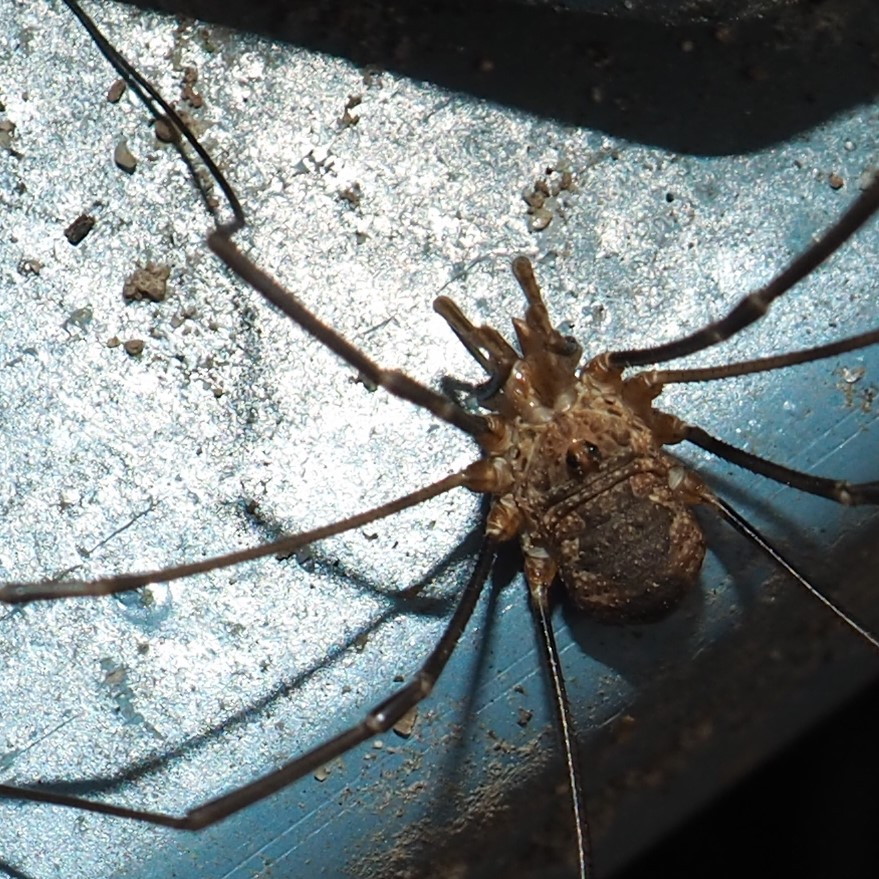
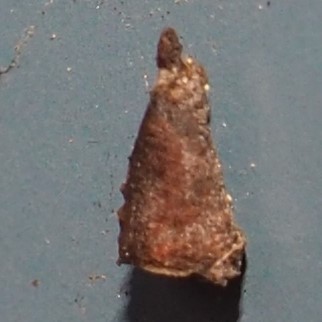

Picture 1 seems to show a lot of tiny bits of very young creatures, with a few larger pieces of protoplasm in their midst. I've no idea what they will turn out to be, but at least I like to think that all the "good stuff" is hidden - it's just slowly opening up. Second is a shadow of fine branches (probably euonymus) on the shop wall. Image 3 shows a single hunk of protoplasm or something that looks like it.
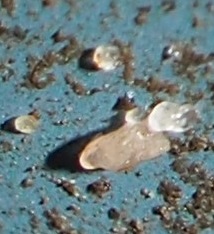


We have arrived at the spider group with record speed, but that's just because there weren't a whole lot of other things to look at. This first one seems to be in the Family Linyphiidae, but this time in the Genus Erigone (a member of Sheetweb and Dwarf Weavers). I identified it by looking at lots of pictures and classifications in iNaturalist.org, so don't write it down in heavy duty ink. The second spider is most likely a member of Genus Bassaniana, as folks go by the flatness of the carapace (top of the head segment), which flatness runs all the way forward to the eyes. Third, that lovely greenish Humpbacked Orbweaver, Eustala Anastera.
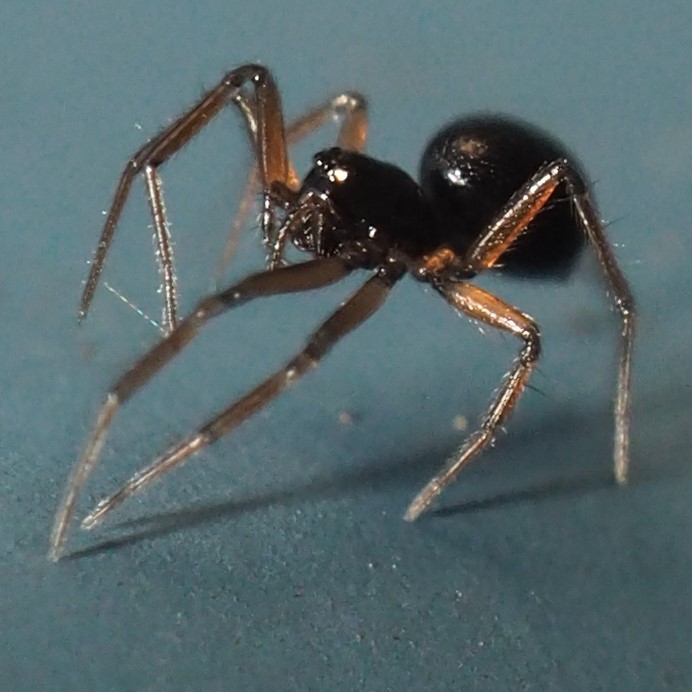


The tiny Orchard Orbweaver is getting to be easier to see. It presents as a bright white spot, and somehow the camera converts that spot into the spider. Image 2 is a mystery to me. But Number 3 looks like a small Common House Spider. At this level of size it is not a sure thing, but it looks so much like the CHS.
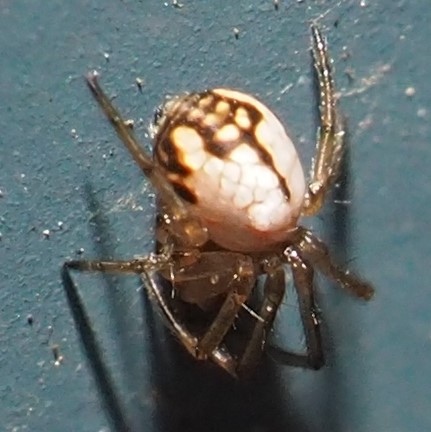
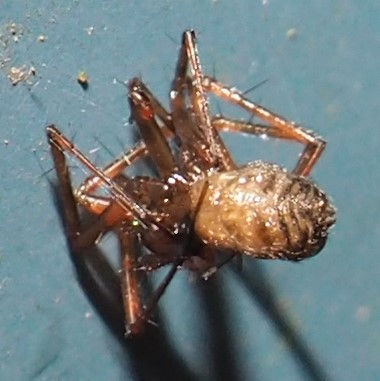
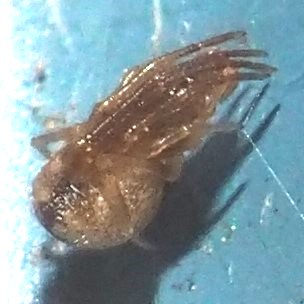
One more spider. I was checking my redbud saplings for any sign of treehoppers or eggs of treehoppers. A spider suddenly got spooked and kept moving so that all my photos are a bit fuzzy, but a colleague on iNat identified it as Genus Eustala. Hopefully we can narrow that down to species one day, but we'll just have to keep looking at that spot.

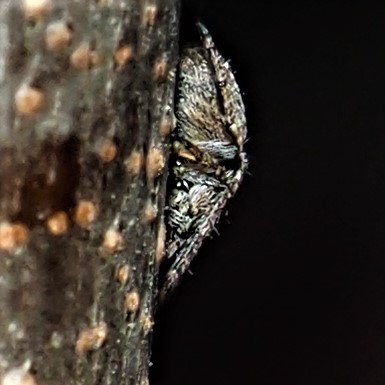
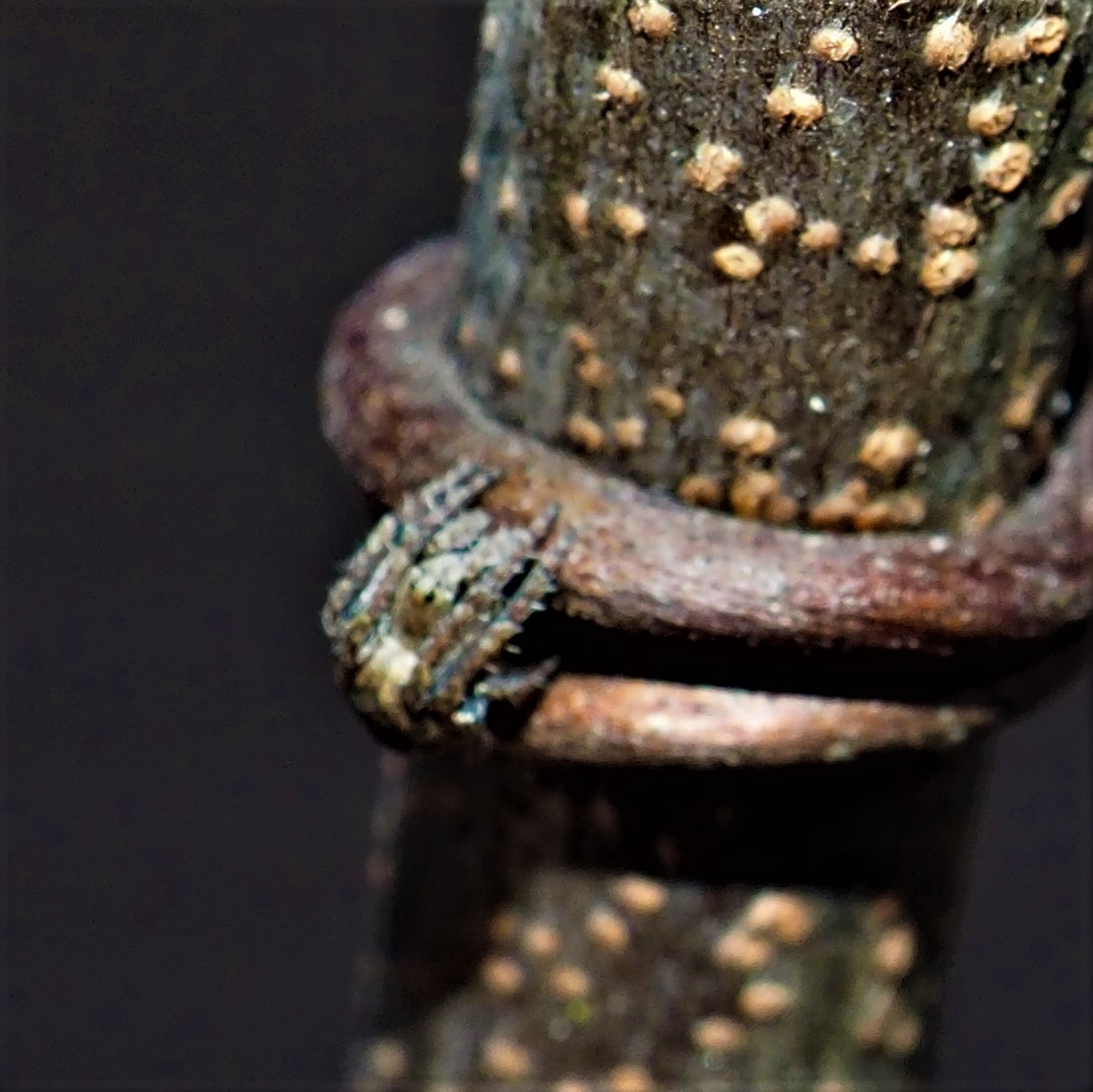
Lastly, here is that Gall Wasp, the mimic of Big-butted black ants. What does this mean anyway? Well, you know that on many plants, Galls (variously shaped growths) develop when an insect lays its eggs in or on the plant. If the insect is a wasp, we call it a Gall Wasp. If the insect is a midge, we call it a Gall midge. I've still not identified any Midge-caused galls.
But I think both the pink swelling on the oak stem and the fluffy things on the goldenrod are caused by gall wasps.

 8 18 18 1.jpg)
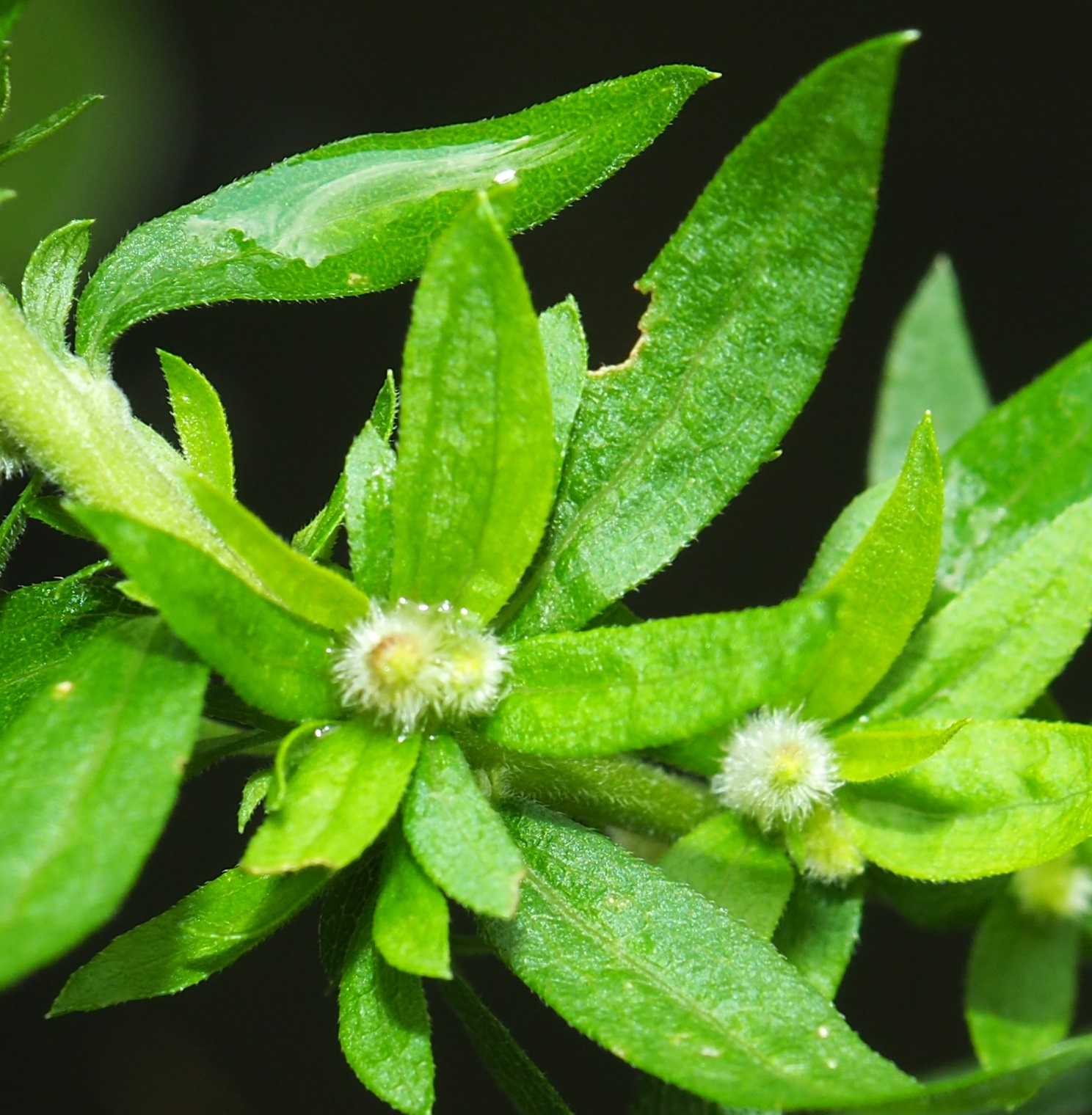
One pretty picture of Tripper. I had a box left over from something and an old pillow. Tripper hasn't been her old self since she had that stomach bug a couple of months ago. Now she has her own little bed in the kitchen, and my friend Susan got a nice blanket from one of the SPCA's to make it complete. Tripper formed the blanket into a kitty-shaped oval and now it's really hers.

Love, Martha
Back to December 16, 2018
Forward to February 3, 2019
Back to main menu
copyright Martha O'Kennon 2018














































 8 18 18 1.jpg)

